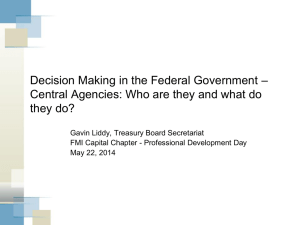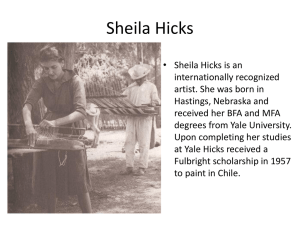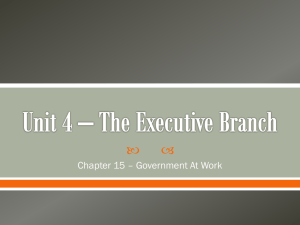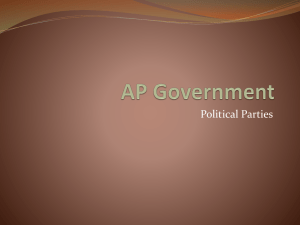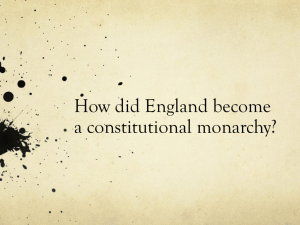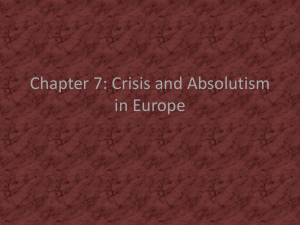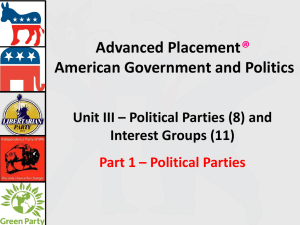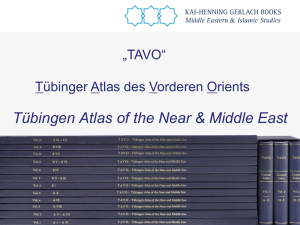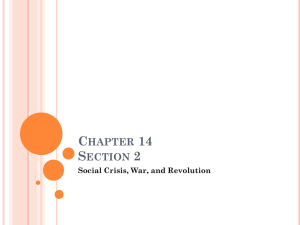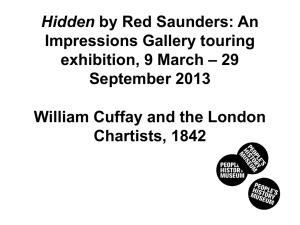Westminster model in Comparative Perspective
advertisement
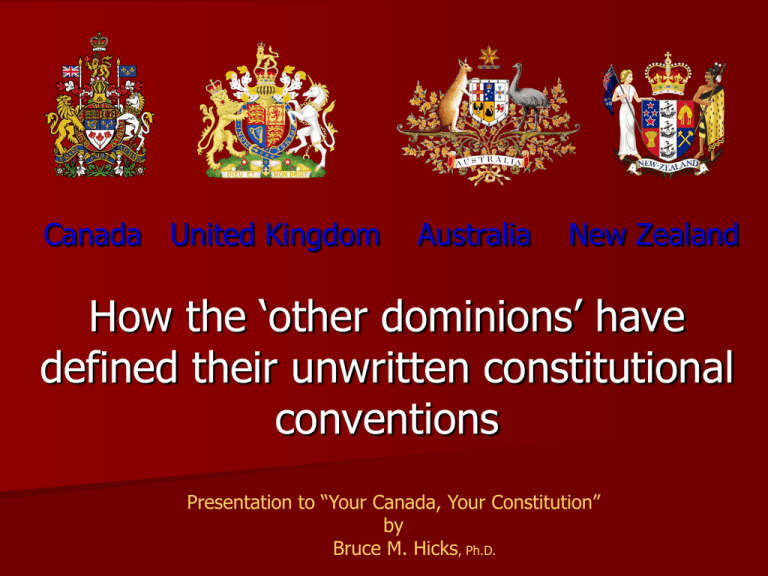
Canada United Kingdom Australia New Zealand How the ‘other dominions’ have defined their unwritten constitutional conventions Presentation to “Your Canada, Your Constitution” by Bruce M. Hicks, Ph.D. Monarch Shared • • Westminster model • responsible parliamentary government constitutional conventions • • • Conventions should, absent legislative or constitutional alteration, operationalize the same (and most conventions emerged prior to 1867) Constitutional scholars in each of these countries draw on precedents from the other to identify the proper functioning of the conventions Statute of Westminster, 1931 1. Canada’s current constitutional conventions surrounding the reserve powers had been established by 1931 2. Reserve Powers/Personal Prerogatives of Queen (delegated by Royal ‘Letters Patent’ to the governor general) Bruce M. Hicks Differences 1. 2. Approach to reserve powers (process) Types of governments formed (outcome) Chronological Bruce M. Hicks Australia Swan by-election, 1918 Party Candidate Votes % Labor Edwin Corboy 6,540 34.4 Farmers and Settlers Basil Murray 5,975 31.4 Nationalist William Hedges 5,635 29.6 Independent William Watson 884 4.6 19,213 64.3% Turnout Bruce M. Hicks Australia Preferential Voting (Alternative Vote/Instant Run Off Voting) – – – 1919 election saw the Nationalist only winning 37 seats (Labour 25 and Country 11) 1922 election, lost its majority, and it formed a coalition with the Country Party. – Nationalist Government Bill Hughes , PM 52/75 seats As part of the coalition deal, Hughes was removed as party leader and Stanley Bruce became the first coalition Prime Minister. Semi-permanent Coalition – – Leader of party with most seats=PM Leader of the junior party is Deputy PM and chooses their party’s cabinet members Bruce M. Hicks Australia Bruce M. Hicks Australia Governments need to have the confidence of the House to govern (pursuant to Without a majority, they negotiate for support of independents/smaller parties our shared constitutional conventions) – – – When this support shifts, another political party can form the government (or an election is called, depending on how long since the last election) Maximum length between elections is 3 years Equally, when the standings shift and a government gets a majority, support agreements are sometimes continued even though no longer necessary 2010 election: – Labour 74 versus Liberal-National Coalition 74 1 Green and 6 Independents Supported by green and 3 independents 17 days of negotiation (both public and private) resulting in Labour PM Gillard forming government – Likelihood of Liberal-National Coalition opportunistically calling election in less than 3 years was a factor – Commitment to fixed elections every 3 years (next to be held in Sept. or Oct. 2013, to be agreed upon by the parties, though no steps have yet been taken to make this change) Independent MP (Oakeshott) offered and declined a Cabinet seat Written agreements include parliamentary reform Bruce M. Hicks Australia Government formation has been largely left to party leaders but… Reserve Powers The Governor General’s office describes the reserve powers as those “which the GovernorGeneral may, in certain circumstances, exercise without – or contrary to – ministerial advice”. In Australia these “are generally agreed to at least include: “1. The power to appoint a Prime Minister if an election has resulted in a ‘hung parliament’; “2. The power to dismiss a Prime Minister where he or she has lost the confidence of the Parliament; “3. The power to dismiss a Prime Minister or Minister when he or she is acting unlawfully; and 4. The power to refuse to dissolve the House of Representatives despite a request from the Prime Minister.“ The Governor General also claims “a supervisory role to see that the processes of the Federal Executive Council are conducted lawfully and regularly” and “protect the Constitution and to facilitate the work of the Commonwealth Parliament and Government”. For example, the governor general has to satisfy herself that a law has passed both chambers of Parliament and received the certification of the Attorney General before giving Royal assent. Office of the Governor General, “Governor General’s Role” published at http://www.gg.gov.au/content.php/category/id/1/title/role. Bruce M. Hicks Australia Government Dismissal – Dismissal of PMs 1932, New South Wales Governor Sir Philip Game dismissed Premier Jack Lang 1975, GG Sir John Kerr dismissed Labour PM Gough Whitlam – – – – Senate informed PM that it would only grant supply following a general election; PM refused and supply was denied PM recommended dissolution but was told that his commission had been withdrawn Opposition leader, Malcolm Fraser, was appointed PM on condition he delivered supply and he recommend dissolving both chambers Refusal to dismiss Cabinet 1987, Queensland Premier Joh Bjelke-Petersen asked Governor Sir Walter Campbell to dismiss the ministry and reappoint him as PM with a new Cabinet Campbell convinced the premier to try to obtain the 5 specific resignations he wanted and when he couldn’t, GG agreed to dismiss 3 of them Bruce M. Hicks New Zealand Bruce M. Hicks New Zealand Electoral System – 1996 switched to Mixed Member Proportionality (MMP) Parties get additional seats to bring their representation into line with the percentage of votes they received national-wide 5% a minimum 1996-1999 tumultuous/short-lived governments Choice of Governors General 1996-2001, Sir Michael Hardie-Boys, former Court of Appeal Judge 2001-2006, Dame Silvia Cartwright, former High Court Judge Sir Anand Satyanaud, former District Court Judge and Ombudsman Bruce M. Hicks New Zealand No political party could expect to get a majority Multiple political parties in legislature (currently 8) Coalition governments or Semi-coalition ‘minority’ governments – Agreements for confidence and supply – minority party leaders sometimes given portfolios but don’t serve in Cabinet Culture change: Political, academic and media elites now avoid terminology like ‘hung parliament’ or announcing on election night who should form a `minority government’ Bruce M. Hicks New Zealand Cabinet Manual Process – – – – – – – Has been a manual since 1979 (a restricted document with limited distribution) With MMP, the manual was revised and made publically available in 1996 Lessons from 1996-1999 (and speeches from the GG during this period) informed the 2001 edition Compiled by the Cabinet office It is adopted by each administration Officials and academics submit suggestions to the cabinet office for improvements When sufficient number, office proposes a new edition to the PM – It emphasizes that the politicians should be left to their own devices to bargain and horsetrade, without outside interference. Civil servants can assist the negotiation, but they should limit their advice to areas of policy where there may be potential conflict or potential convergence. It stresses that the party with the biggest number of seats does not get to go first in attempting to form a government. It also lays down very clear procedures for the operation of a ‘caretaker government’, during the election and during the weeks that it will take to strike a deal. Content – – – Descriptive, rather than prescriptive – – – Akin to a dictionary Practices and procedures are developed in Cabinet, stem from statute or convention and are reported in the manual, not created by the manual Manual will lag behind Manual’s credibility comes from its content Bruce M. Hicks United Kingdom Bruce M. Hicks United Kingdom 2010, Election Prep. for a ‘Hung Parliament’ Gordon Campbell instructs Cabinet Secretary to draft sections for the Cabinet Office Manual codifying the conventions surrounding government formation in a hung parliament and the ‘caretaker convention’ Content – Goal of the section/manual is not to constrain the monarch (or legislature) but to govern the operations of the public service during an election and the period needed by a hung parliament to decide upon a government Commits the Cabinet office to support the political parties in parliament to explore alternative government configurations Limits the authority of ministers to make controversial decision (and sets out process to obtain opposition concurrence for urgent decision) Process – – – A select committee is struck in parliament (entitled the “Justice Select Committee on the constitutional processes following a general election”) and the sections are submitted to them Cabinet secretary as well as constitutional scholars appear before it before recommending changes All political parties committed to ensuring that the Queen be left out of the partisan fray Parliament is to fulfill the role as the ‘electoral college’ for the country Bruce M. Hicks United Kingdom Labour and Conservatives explore coalition with Liberal-Democrats – PM has cabinet secretary provide departmental expertise to all political parties Current coalition government – – Conservative PM Cameron (¾ cabinet) Liberal-Democrat Deputy PM Clegg (¼ cabinet) Agreement to last until 2015 1. 2. 3. 4. 5. 6. 7. 8. 9. 10. 11. Deficit Reduction Spending Review - NHS, Schools and a Fairer Society Tax Measures Banking Reform Immigration Political Reform Pensions and Welfare Education Relationship with the EU Civil liberties Environment Bruce M. Hicks United Kingdom – Fixed-term Parliaments Act, 2011 First Thursday in May (beginning May 7, 2015) – Only 2 ways to trigger an early election: – – Government can delay election for up to 2 months, with cause (and both chambers of Parliament must agree to this). Motion: “That this House has no confidence in Her Majesty’s Government” – Results in a 14 day ‘government formation’ period during which a new government (or presumably the same if support is re-established) must get the House of Commons to adopt the motion: “That this House has confidence in Her Majesty’s Government” Motion: “That there shall be an early parliamentary general election” (requires 2/3 majority) The Queen can no longer dissolve Parliament Cabinet Manual – – – Draft manual submitted to Parliament (and the public) by coalition in December 2010 Hearings by the Political and Constitutional Reform Committee, the House of Lords Constitution Committee and the Public Administration Select Committee Reports responded to by the Cabinet Manual adopted by Cabinet (with amendments) Both PROCESS and CONTENT Bruce M. Hicks In Sum Causation for Process Difference Electoral system – expectation of future majority alters bargaining strategy in government formation and cooperation Cultural, Temporal and Historic Differences Hicks, B. M. 2010. “British and Canadian Experience with the Royal Prerogative”, Canadian Parliamentary Review 33 (2): 18-24. Different relationship between the politicians(people) and the: – – Queen Governors Hicks, B. M. 2009. “The reserve power as a safeguard for democracy, and other lies my forefathers told me”, Inroads 25: 60-69. Bruce M. Hicks Differences in outcome Majority Coalition Majority Rule Single Party Majority Rule (e.g. Canada 2010-Present; (e.g. UK 2010-present; Scotland 1999-2007; Wales 2007-2010) UK 1979-2010) Single Party Single Party Minority Rule (e.g. Canada 1921-1925; Negotiated 1957-1968; 1972-1973; New Zealand 2008-present; Australia 2010-present; Ontario 1985-1987) MultiParty Coalition Minority Rule (e.g. New Zealand 1999-2008) Minority Unsupported Rule Ad Hoc Liberals 1925-1926; Liberals 2004-2006; Conservatives 2006-2010 - 30 - Bruce M. Hicks
